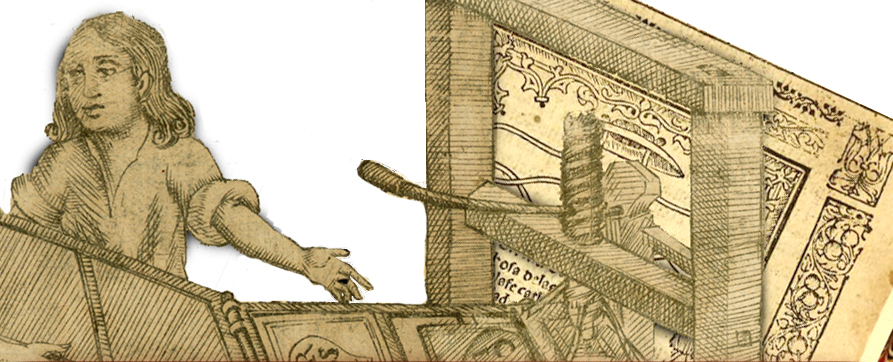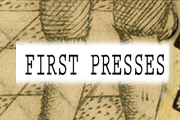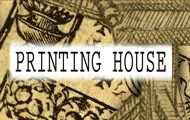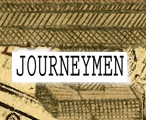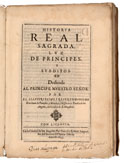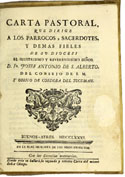| While some sources claim that Juan Clímaco's Escala espiritual was the first book printed in New Spain, sometime around 1535, these reports are most likely apocryphal. On more secure footing is reference to Juan de Zumárraga's Breve y mas compendiosa doctrina Christiana (1539), which was seen as late as 1944, but is today unaccounted for. Following a two page fragment of the Manual de adultos (1540) at the Biblioteca Nacional de España, and a news sheet Relación del espantable terremoto...en la cibdad de Guatimala (1541), now also lost, Zumárraga's Dotrina breue (1544) is the first extant full book printed in the Americas. |
||
 |
||
Early Mexico 1. [Manual de adultos], (Imprimiose ... en ... Mexico : En casa d[e] Jua[n] Cromberger., Año d[e] mill y quinie[n]tos y quare[n]ta. El .xiij dias d[e] mes d[e] Dezie[m]bre. [13 Dec. 1540]).This facsimile, taken from the only known copy at the National Library of Spain, is the earliest extant remnant of the press in Mexico. It consists of one page of Latin verses by Cristóbal de Cabrera, followed by errata. |
||
The First From Peru 2. Spain, Pragmatica sobre los diez dias del año (Impressa ... en esta dicha Ciudad de los Reyes [Lima]: Por Antonio Ricardo, 1584).Originally from Turin, Antonio Ricardo arrived in Mexico as early as 1570, and began as a printer there in 1577. Summoned to Peru by the Jesuits to print texts emerging from the Third Council of Lima, the royal license to open the press was long delayed. Nevertheless, printing of the Doctrina christiana (1584) began even before the King's license arrived. It was interrupted, however, by notice of the calendrical reforms ordered by Pope Gregory XVIII. This pamphlet, thus, is the earliest surviving item off the press in Peru. |
||
Early Manila Imprint Francisco de San José, Arte y reglas de la lengua tagala (En el partido de Bataan: Por Thomas Pin Pin, 1610).Xylographic (woodblock) printing was executed in China as early as the ninth century CE, and spread throughout South East Asia. The earliest books printed in the Philippines following the arrival of the Spanish, a Doctrina christiana and the Shih-lu, both in 1593, were likewise printed using xylography. With the arrival of a press and types in 1602, printing in the European fashion began. As with Mexico and Peru, many of the earliest works were doctrinal texts in indigenous languages, or studies of the languages themselves. This book has not been digitized due to its fragile state. |
||
A Press in Juli? Ludovico Bertonio, Confessionario muy copioso en dos lenguas, aymara, y española (Impresso en ... Iuli [Peru]: Por Francisco del Canto, 1612).There remains some debate about the four books, all from 1612, bearing the imprint of Francisco del Canto in the Jesuit province of Juli. Del Canto was in jail for debts for much of 1612, thus it appears unlikely that he had an active role in printing these texts. Were they actually printed in Juli, with the Jesuits simply using del Canto's name as cover? Or instead, were they printed at del Canto's press in Lima with Juli simply referring to place of issuance? |
||
A Fitful Start in Puebla de los Angeles Juan de Palafox y Mendoza, Historia real sagrada, luz de principes y subditos (En la Ciudad de los Angeles: por Francisco Robledo, impressor del Secreto del Santo Oficio, 1643).Printing had a fitful start in Puebla de los Angeles, with no fewer than five printers at work there between 1642 and 1651. Pedro Quiñones printed the first surviving work, the Sumario of 1642. He and two other printers produced no more than one identifiable volume each, and a forth only two. The remaining printer, Juan Blanco de Alcázar printed a number of volumes between 1646 and 1651, but was ultimately silenced by the viceroy. It was not until the Borja family of printers began in 1654 that the press was well established. |
||
Guatemala la Antigua Payo Enríquez de Ribera, El maestro D. F. Payo de Ribera, obispo de Goatemala, y de la Verapaz, representa al real acuerdo destas provincias de la Goatemala ([Guatemala: s.n, 1664]).José de Pineda Ibarra, the first printer in Guatemala, was born in Mexico and worked there for both Paula de Benavides, the widow of Bernardo Calderón, and Hipólito de Ribera, the two most prominent printers of the time. Guatemala's newly appointed Bishop Payo Enríquez de Ribera charged Francisco de Borja with finding a press and printer and sending them to Guatemala. Borja found Pineda Ibarra in Puebla de los Angeles, but it is not entirely clear where his press came from. Juan Blanco de Alcázar's press went to the Colegio de San Luis following his death, and only one book from 1657 is known with their imprint, thus this appears to be one possible source. |
||
| The Mission Press in Paraguay Antonio Garriga, Instruccion practica para ordenar santamente la vidà (En Loreto [Paraguay]: con licencia de los superiores en la imprenta de la Compañia, 1713). Requests by the Jesuits for a press in their Paraguayan missions began as early as 1633, but it would not be until 1700 that these requests were granted. Until that time, books were imported, or produced in manuscript and some of the latter still survive. In 1700, the first printed book appeared, Juan Bautista Neumann's Martirologio Romano, since lost. The first extant book printed in the missions is Juan Eusebio Nieremberg's De la diferencia entre lo temporal y eterno. All the paper for these books had to be imported from Spain, but the press was constructed in the missions, and the type was cut and cast there as well. As many as 23 books were printed in the missions between 1700 and 1727, although only nine titles survive today. For reasons that have yet to be fully explained, printing ceased in 1727, 40 years prior to the expulsion of the Jesuits. |
||
| The Jesuit Press in New Grenada (Colombia) Baltazar de Messa, Affectuosa novena de la Santissima Virgen Maria, en su milagrosa advocacion de la Peña (En Santa Fè de Bogotà: En la Imprenta de la Compañia de Jesus, 1739). While there have been some suggestions of small scale job printing taking place in New Grenada as early as the late seventeenth century, the first book appeared only in 1738, at the Jesuit press administered by Francisco de la Peña. The vast majority of early Bogota imprints were novenas in quarto format. These small devotional texts gained great popularity in the early eighteenth century. |
||
| Early Brazilian Printing Luis António Rosado da Cunha, Relaçaõ da entrada que fez o excellentissimo, e reverendissimo senhor D. Fr. Antonio do Desterro Malheyro Bispo do Rio de Janeiro. (Rio de Janeiro: Na segunda officina de Antonio Isidoro da Fonceca, 1247 [i. e. 1747]). Unlike Spanish America, and indeed, unlike their possessions in Goa, Macau and elsewhere, the Portuguese did not establish a press in Brazil. A printer, Pieter Janszoon, and press were sent to Dutch Pernambuco in 1643, however Janszoon died immediately on arrival and no other printer could be found. As with New Grenada, there have been some suggestions of small scale job printing in Recife as early as the first decade of the eighteenth century, but no solid evidence has been found to confirm the conjecture. Lisbon printer Antonio Isidoro da Fonseca became the first known printer in Brazil, publishing this pamphlet in February of 1747. One other work is known from his press--an announcement of a thesis defense on silk--and two others are suspected. By May of that year, however, royal orders were sent to silence the press and have Fonseca returned to Lisbon. |
||
| The Impressão Regia Portugal, Relação dos despachos publicados na corte pelo expediente da secretaria de estado dos negocios estrangeiros, e da guerra (Rio de Janeiro em 13 de maio de 1808: Na Impressão Regia, [1808]). When Prince João left Portugal for Brazil on November 29th, 1807, he took with him hundreds of members of the court and their families. He also took with him some 60,000 volumes of the national library, and, as luck would have it, two presses and twenty-eight cases of type that had been ordered from England some months previously but were still at the docks. This pamphlet is the first item off that press, printed on the Prince Regent's birthday. |
||
| The Press in Havana Spain, Reglamento que de orden de S. M. ha hecho el excelentissimo señor Conde de Ricla (Impresso en la Havana: en la Imprenta de D. Blas de los Olivos, Impressor del Exmo. Sr. Conde de Ricla, 1764). Although there are notices of books printed in Havana as early as 1707, they are assuredly bibliographical ghosts. The first book printed in Havana was long thought to be the Tarifa general de precios de medicinas (1723), by Carlos Habré from Ghent. Recently, a 1722 imprint was identified, a novena for Saint Agustin. Nevertheless, Habré printed very little, and likely with a binding press rather than a true printing press. He was followed by Francisco José de Paula, who likewise printed little. The industry only began to flourish with the appearance of Blas de los Olivos around 1756. |
||
| Rio de la Plata and the Press of the Niños Expósitos Catholic Church, Carta pastoral (Buenos-Ayres. MDCCLXXXI: En la Real Imprenta de los Niños Expositos, [1781]). A press began operations in 1766 in Córdoba del Tucuman, Argentina, at the Jesuit colegio of Montserrat. It ceased the following year, owing to the expulsion of the Company from Spanish realms. The press was seized, and remained there, inoperative, until 1779 and the opening of the orphanage, or, Casa de niños expositos. Viceroy Juan José de Vértiz y Salcedo requested the press for the Casa, in order to help pay for its expenses, and it began operations there the following year. |
||
| New York Printers in Chile Santiago (Chile), Tornaguia No. ([Santiago de Chile: s.n, 18--]). |
||
| Aurora de Chile, periodico ministerial, y politico (Santiago de Chile: En la imprenta de este Superior Gobierno, 1812). The first printing press to arrive in Santiago was also brought by a Jesuit, one Carlos Haimhausen in 1747. It was installed at the Universidad de San Felipe, but there is no clear evidence that it was ever put into operation prior to the expulsion of 1767. While some printing took place in Santiago de Chile as early as 1780, with few exceptions, until 1811 it was typically confined to forms such as the above. In that year, Mateo Arnaldo Hoevel arranged with John R. Livingston of New York to bring a press and three printers--Samuel Burr Johnston, William H. Burbidge, and Simon Garrison--to Santiago. They produced the Aurora de Chile, that ran from 13 February 1812 to 1 April 1813. |
||
| Portable Presses José de Canterac, Boletin del egercito nacional de Lima ([Ica]: Imprenta que fue de la division enemiga del Sur, [1822]). With the Constitution of Cádiz at least nominally allowing freedom of the press, other cities began to acquire printing presses in quick succession. During the wars of independence, there were likewise portable presses that accompanied the armies to announce battlefield victories, as here, from "The press that belonged to the enemy division from the South." |
||
| Next | ||
| Exhibition prepared by Kenneth C. Ward. on view in the reading room from november 2014 to February 2015. |
||
